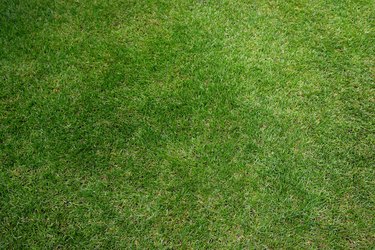
Laying new sod can be a quicker way to renovate a lawn than planting new seed. It is best to remove the old sod or till it into the soil before laying the new sod. A layer of old sod will prevent the new sod from developing roots. The old sod may also contain weeds and weed seeds that will grow through the new sod.
Roots
Video of the Day
One of the biggest problems with laying new sod over dead sod is root development. The roots of the new sod need to grow into the soil to absorb nutrients and water. Leaving the old sod in place creates a barrier of old roots and thatch several inches thick between the new sod roots and the soil. The new sod cannot get roots through this barrier, leaving it with a shallow root system that is unable to support the new grass. The new sod may die from lack of water and nutrients. Because it is unhealthy, it is also more likely to develop diseases or insect infestations.
Video of the Day
Decomposition
The old sod will eventually decompose under the new sod. The new sod layer, however, will prevent air from getting to the decomposing mat of old sod. The lack of air will inhibit decomposition, leaving the old sod slimy and squishy as it breaks down. This rotting mass is not healthy for the new roots. Breaking up the sod and tilling it into the soil will allow the old sod to decompose faster. Tilling will allow the old sod to add organic material to the soil rather than leaving a layer of rot between the new sod and the soil.
Weeds
The dead sod likely contains weeds and weed seeds. If left directly under the new sod, weeds can grow through the new sod. Because the weed roots can access the soil and the new sod cannot, the weeds will be much healthier than the new grass. Removing the old sod will remove the old weeds. Tilling it under will break up the weeds and force seeds too far into the soil to germinate, leaving the new sod without the old weeds.
Height
Laying sod involves adding several inches of soil and roots as well as the grass. Placing new sod over old will raise the height of the area. This can place the grass line higher than sidewalk areas, leaving space for erosion to damage the new sod. It also leaves a gap for lawn pests to get into the new sod. It can leave sprinkler systems unable to reach high enough to water at the new level. If the new sod is only a patch for one problem area, the lawn will be lumpy and uneven.